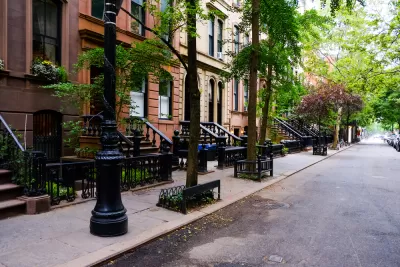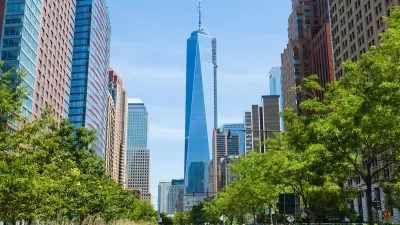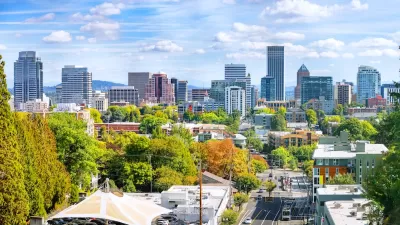A case study provided by the MillionTreesNYC program offers insight into complicated territorial boundaries that can challenge urban greening projects.

An article by Nicole Peterson digs into the results of a recent paper titled "Public Reactions to New Street Tree Planting," examining public relations efforts for the MillionTreesNYC program.
According to Peterson, the key lesson for landscape architects to gain from the study is: "we are often under the impression that because we love urban trees and seeing new trees planted, that everyone around us will love these plantings as well. Some city dwellers do in fact welcome trees with great excitement, but others may see the trees as an intrusion of their private space or territory."
For non-landscape architects and landscape architects alike, the important lesson might also be a central concept employed by Peterson: the sidewalk as a "gray zone" that blurs the line between public and private interests.
According to Peterson, "while the city has legal authority over the sidewalk, responsibility for this zone also lies with citizens. This 'Sidewalk Grey Zone' is one reason the public can have negative reactions to tree plantings. In this example, The City of New York owns the space between the curb and the property line, but the home or business owner is responsible for the maintenance and upkeep of the sidewalk."
As for the findings reported by the paper: the study's researchers "investigated the content of letters, emails, and transcriptions of calls from 311 received by the Parks Department’s Central Forestry and Horticulture Division between 2007 and 2009," according to Peterson's explanation.
"Placement objections" were the largest primary category of complaint (33%), according to Peterson. "Of those complaints, most people were concerned about the disturbance of utility lines."
The evidence of the challenging nature of the sidewalk gray zone, however, was probably most apparent in the category of "policy objections." Of those, 57% "were a general refusal, meaning the resident did not want a tree in front of their property." According to Peterson, "[t]his reaction assumes dissatisfaction with the planting policies and the city exercising its authority over right of way areas. It also indicates how the planting of street trees can evoke issues of territoriality and control."
FULL STORY: The Sidewalk Gray Zone

Alabama: Trump Terminates Settlements for Black Communities Harmed By Raw Sewage
Trump deemed the landmark civil rights agreement “illegal DEI and environmental justice policy.”

Planetizen Federal Action Tracker
A weekly monitor of how Trump’s orders and actions are impacting planners and planning in America.

The 120 Year Old Tiny Home Villages That Sheltered San Francisco’s Earthquake Refugees
More than a century ago, San Francisco mobilized to house thousands of residents displaced by the 1906 earthquake. Could their strategy offer a model for the present?

Ken Jennings Launches Transit Web Series
The Jeopardy champ wants you to ride public transit.

BLM To Rescind Public Lands Rule
The change will downgrade conservation, once again putting federal land at risk for mining and other extractive uses.

Indy Neighborhood Group Builds Temporary Multi-Use Path
Community members, aided in part by funding from the city, repurposed a vehicle lane to create a protected bike and pedestrian path for the summer season.
Urban Design for Planners 1: Software Tools
This six-course series explores essential urban design concepts using open source software and equips planners with the tools they need to participate fully in the urban design process.
Planning for Universal Design
Learn the tools for implementing Universal Design in planning regulations.
Clanton & Associates, Inc.
Jessamine County Fiscal Court
Institute for Housing and Urban Development Studies (IHS)
City of Grandview
Harvard GSD Executive Education
Toledo-Lucas County Plan Commissions
Salt Lake City
NYU Wagner Graduate School of Public Service




























